We use information collected through cookies and similar technologies to improve your experience on our site, analyze how you use it and for marketing purposes.
Your privacy settings
We and our partners use information collected through cookies and similar technologies to improve your experience on our site, analyze how you use it and for marketing purposes. Because we respect your right to privacy, you can choose not to allow some types of cookies. However, blocking some types of cookies may impact your experience of the site and the services we are able to offer. In some cases, data obtained from cookies is shared with third parties for analytics or marketing reasons. You can exercise your right to opt-out of that sharing at any time by disabling cookies.
Manage Consent Preferences
Necessary
Always ON
These cookies and scripts are necessary for the website to function and cannot be switched off. They are usually only set in response to actions made by you which amount to a request for services, such as setting your privacy preferences, logging in or filling in forms. You can set your browser to block oralert you about these cookies, but some parts of the site will not then work. These cookies do not store any personally identifiable information.
Analytics
These cookies and scripts allow us to count visits and traffic sources, so we can measure and improve the performance of our site. They help us know which pages are the most and least popular and see how visitors move around the site. All information these cookies collect is aggregated and therefore anonymous. If you do not allow these cookies and scripts, we will not know when you have visited our site.
Embedded Videos
These cookies and scripts may be set through our site by external video hosting services likeYouTube or Vimeo. They may be used to deliver video content on our website. It's possible for the video provider to build a profile of your interests and show you relevant adverts on this or other websites. They do not directly store personal information, but are based on uniquely identifying your browser and internet device. If you do not allow these cookies or scripts it is possible that embedded video will not function as expected.
Google Fonts
Google Fonts is a font embedding service library. Google Fonts are stored on Google's CDN. The Google Fonts API is designed to limit the collection, storage, and use of end-user data to only what is needed to serve fonts efficiently. Use of Google Fonts API is unauthenticated. No cookies are sent by website visitors to the Google Fonts API. Requests to the Google Fonts API are made to resource-specific domains, such as fonts.googleapis.com or fonts.gstatic.com. This means your font requests are separate from and don't contain any credentials you send to google.com while using other Google services that are authenticated, such as Gmail.
Marketing
These cookies and scripts may be set through our site by our advertising partners. They may be used by those companies to build a profile of your interests and show you relevant adverts on other sites. They do not store directly personal information, but are based on uniquely identifying your browser and internet device. If you do not allow these cookies and scripts, you will experience less targeted advertising.
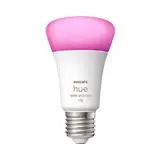
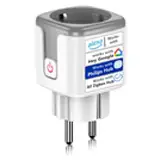
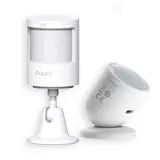
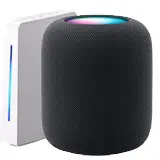
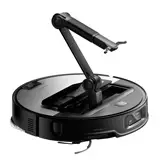

Smart TVs vs. Media Players: Which to choose?
Tired of traditional programming? Want complete control over what you watch on your TV? The battle between Smart TVs and media players is heating up. Both offer access to a world of content, but which is the best option for you? Let's find out!
Smart TV: The all-in-one
A Smart TV is basically a TV on steroids. It comes with a built-in operating system (like Android TV, webOS, or Tizen) that lets you access the internet, install apps, and enjoy streaming services like Netflix, YouTube, or Amazon Prime Video directly on your TV. You don't need anything else anymore. This is pure comfort.
Smart TV advantages
Disadvantages of Smart TVs
Media Players: Power at Your Fingertips
A media player is a device you connect to your TV that lets you access content from various sources: the internet, external hard drives, NAS servers, etc. Think of devices like Roku, Amazon Fire TV Stick, Apple TV, or a dedicated Android TV device. They're like little computers made for entertainment.
Advantages of Media Players
Disadvantages of Media Players
Detailed Comparison: Smart TVs vs. Media Players
To help you make an informed decision, let's compare both devices across several key aspects:
Performance
Generally, the media players They tend to offer better performance than Smart TVs. This is because they are designed specifically for playing multimedia content and have more powerful processors and more RAM. Smart TVs, on the other hand, usually have less powerful processors and less RAM, which can result in a slower and less fluid user experience.
Operating System and Applications
Both Smart TVs and media players provide access to a wide variety of apps, including Netflix, YouTube, Amazon Prime Video, Disney+, Spotify, and many more. However, the selection of apps can vary depending on the operating system. Android TV it's an excellent choice, as is RokuSome smart TV operating systems are more limited.
Image and Sound Quality
The picture and sound quality primarily depend on the TV itself, not the device you're using to play content. Both Smart TVs and media players can support 4K HDR resolutions and Dolby Atmos audio formats. However, some high-end media players may offer slightly superior image processing.
Ease of Use
Them Internet TV They're generally easier to use because everything's built-in. You don't need to connect extra devices or set anything up. You just turn on the TV and you're ready to start enjoying your favorite content. Media players require initial setup, but they're usually pretty intuitive.
Price
The price of Smart TVs varies depending on the brand, size, resolution, and features. Media players also vary in price, from very cheap basic models to more expensive high-end models. Consider your budget before making a decision.
Summary Comparison Table
Who is each option for?
Smart TV: Perfect for…
Media Players: Great for…
Tips and Best Practices
Regardless of which option you choose, here are some tips to get the most out of your viewing experience:
Additional Tips:
Conclusion
The choice between a Smart TV and a media player depends on your individual needs and preferences. If you're looking for a simple and convenient solution, a Smart TV may be sufficient. If you're looking for the best performance, flexibility, and control, a media player is the better option. There is no right or wrong answer! Carefully consider your priorities and choose the device that best suits your lifestyle.
What did you think of this analysis? Share this article with your friends and family who are also on the fence! What's your preferred option? Leave us a comment!
Related Posts
How to create a home theater with smart speakers
Can you imagine enjoying the magic of the movies without leaving home? You no longer need to spend a fortune on specialized rooms. With today's technology, creating a home theater with smart speakers is easier and more affordable than you think. Get ready to transform your living room into an immersive cinematic experience. It's ...
Smart LED lighting for modern decor
Lighting is no longer just a functional necessity. Today, it is a powerful tool for transforming spaces and defining environments. Smart LED lighting has revolutionized the way we decorate our homes and offices, offering unprecedented flexibility and customization. What is smart LED lighting? Intelligent LED lighting combines the ...
TOP 10 Home Party Automation Ideas
Tired of organizing parties at home that leave you exhausted and with no time to enjoy yourself? Automation is your ally. It's not about robots serving cocktails (although that would be great), but about using technology to simplify tasks and optimize the environment. Prepare your home for an unforgettable experience and relax while your guests ...
Turn your bathroom into a spa with smart devices.
Can you imagine transforming your bathroom into a personal sanctuary? A space where stress dissolves and relaxation envelops you completely. Forget about expensive spa visits. With the help of smart technology, you can create an oasis of wellness in the comfort of your home. A Smart Oasis: The Spa at Home ...